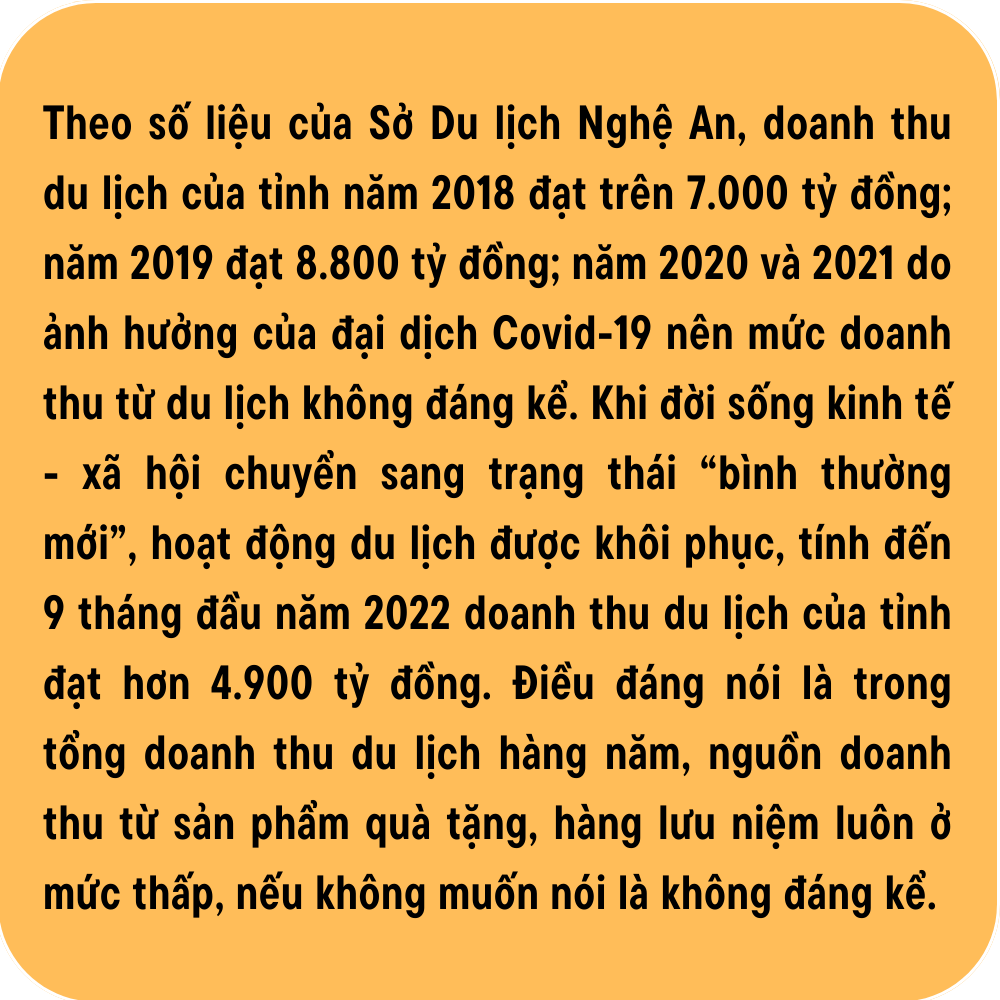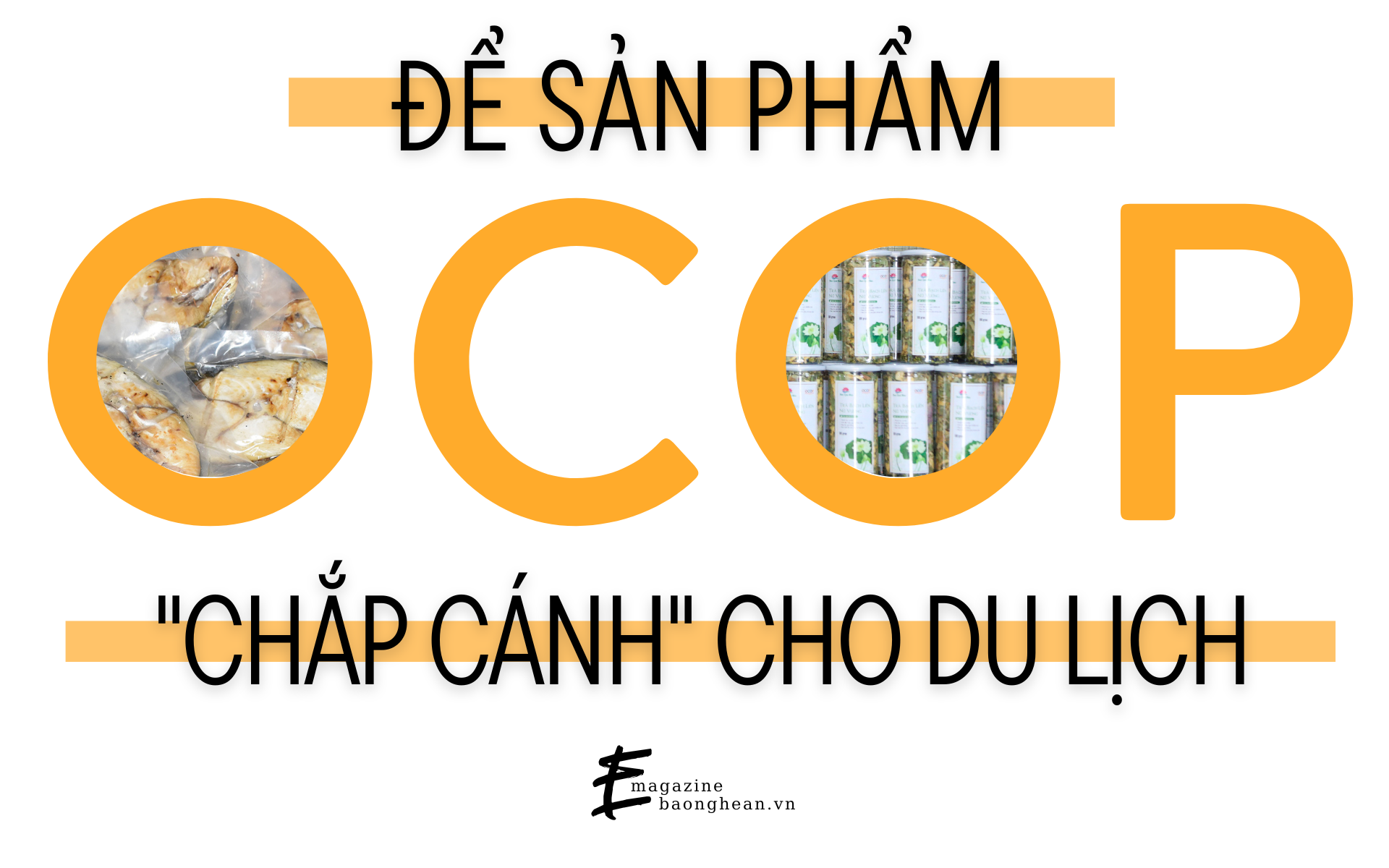
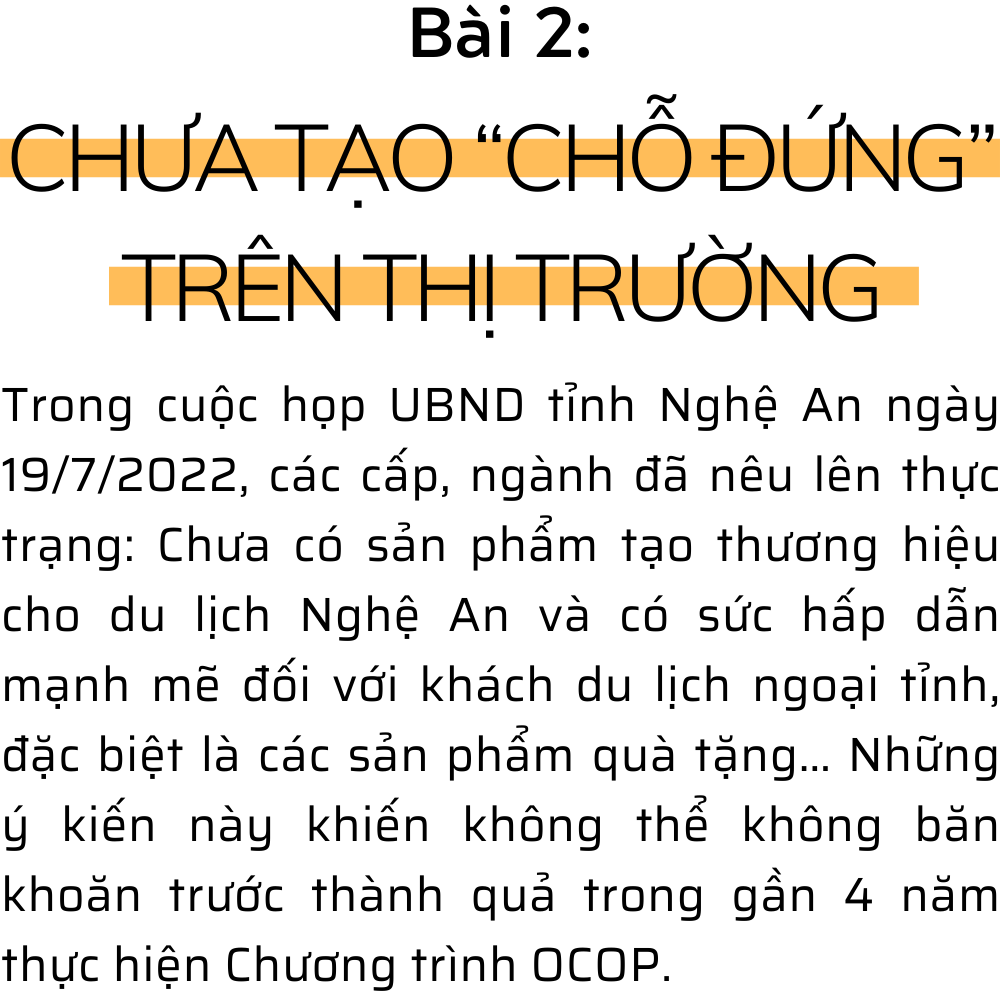

Kim Lien National Special Historical Relic Site (Nam Dan District) is one of the important destinations of Nghe An tourism, welcoming millions of domestic and foreign tourists every year. In the process of developing local tourism, Kim Lien National Special Historical Relic Site is always placed in a key role. With this position, the relic site is not only a cultural and tourism bridge between tourists and Nam Dan District in particular, but also Nghe An Province in general with the whole country and international friends, through material and spiritual values, including local "products".
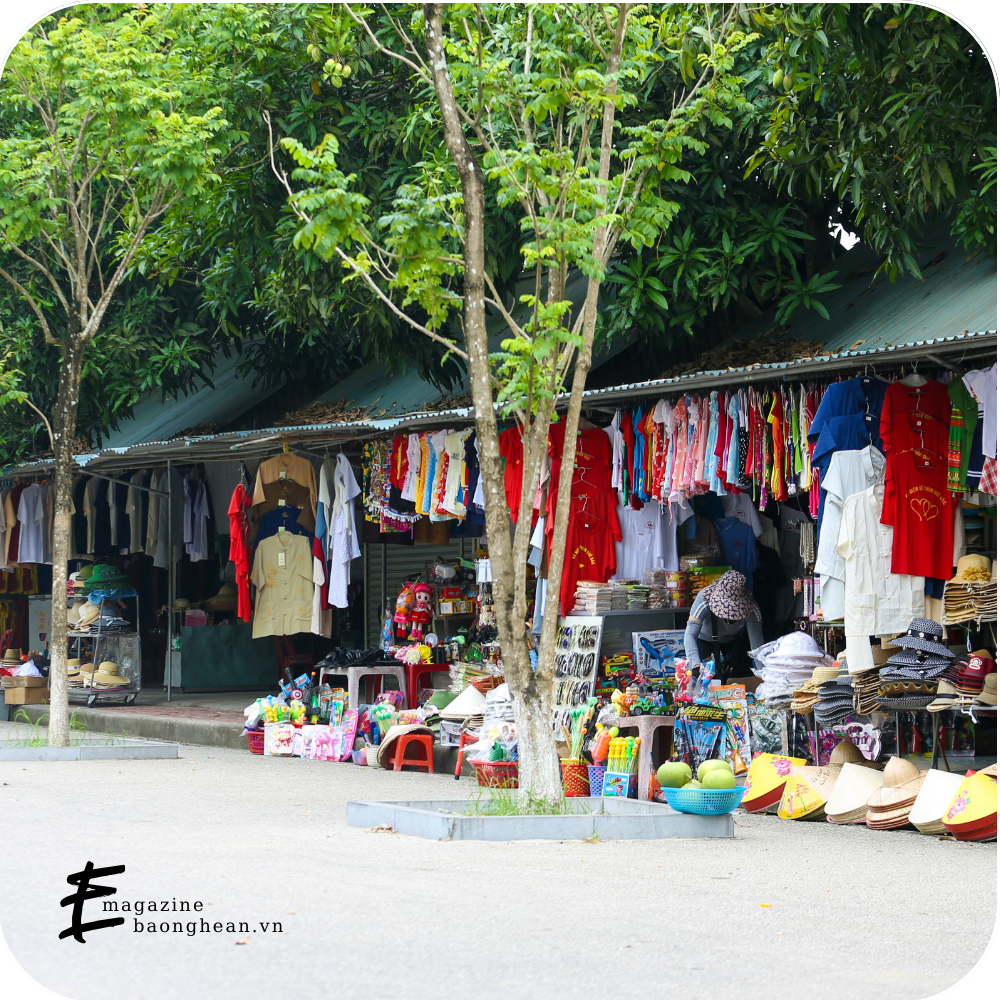
However, when visiting the Kim Lien National Historical Site, many out-of-town visitors expressed: “I want to buy a product that is typical of Uncle Ho’s hometown to give to relatives and friends, but it is very difficult to choose. The stalls in the relic area only sell normal products that can be bought anywhere in the country. There are a few products with local identity on sale that are not suitable to buy as souvenirs or gifts.”
A survey of the bookstore, cultural items, souvenirs managed by the Management Board of the Kim Lien National Special Historical Site and the stalls outside the parking area of the site showed that there were many paintings, photos, books about famous people (which can be bought anywhere); shirts, hats printed with the words "Memories of visiting Uncle Ho's hometown" at cheap prices, poor quality. The gift items sold here are quite popular in many other places in the country: cajuput oil (Hue), che lam cake (Thai Binh), burnt rice (Thanh Hoa), coconut candy (Ben Tre), cu do candy (Ha Tinh); especially children's toys of Chinese origin, rubber sandals... of unknown origin.
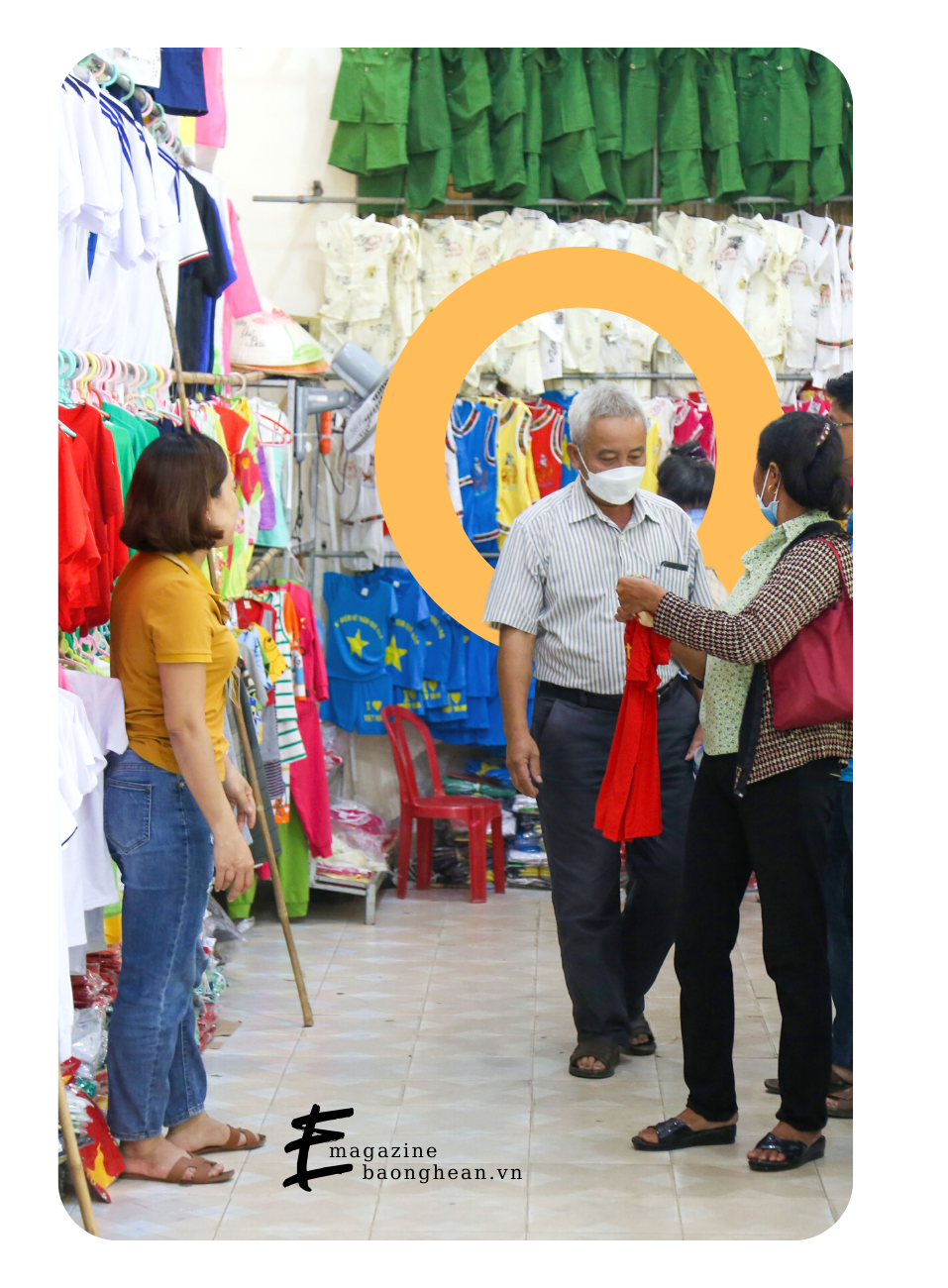
A few products considered to be of Nghe An origin include: Lotus leaf tea (packed in large plastic bags sold by kg), tapioca starch (sold by kg), soy sauce (sold by large bottles)... These products are packaged in large packages, not suitable for gifts. The staff and sellers at these counters and stores are indifferent or do not have the skills to introduce the typical products of Nam Dan district in particular and Nghe An province in general when tourists learn about and ask to buy the products.
What is very worrying is that, while Nam Dan district has many quality OCOP products, which have been awarded 3 or 4 stars at the provincial level such as: Beef ham, tapioca starch, Quy Chinh vermicelli, lotus products... they are "absent" from the stalls. Mr. Pham Kim Tien - Director of Sen Que Bac Agricultural Cooperative shared his feelings: "The cooperative currently owns 9 OCOP products, of which 4 are 4-star products, 5 are 3-star products. The products of the unit all originate from lotus, bearing the clear characteristics of Kim Lien - Uncle Ho's hometown. Our unit and some other units have proposed several times to borrow or rent stalls and shops in the relic area to introduce and sell products but have not received approval. In fact, if local OCOP products are put on sale here, visitors will be more impressed. On the other hand, in my opinion, we should not sell things of unknown origin, which do not bear any characteristics of Nghe An".

The story of Nghe An specialty stores selling a “mixed” range of products from other provinces and cities, with no local OCOP products, does not only happen at tourist areas and spots in the province. This situation also occurs at rest stops and stations in the area.
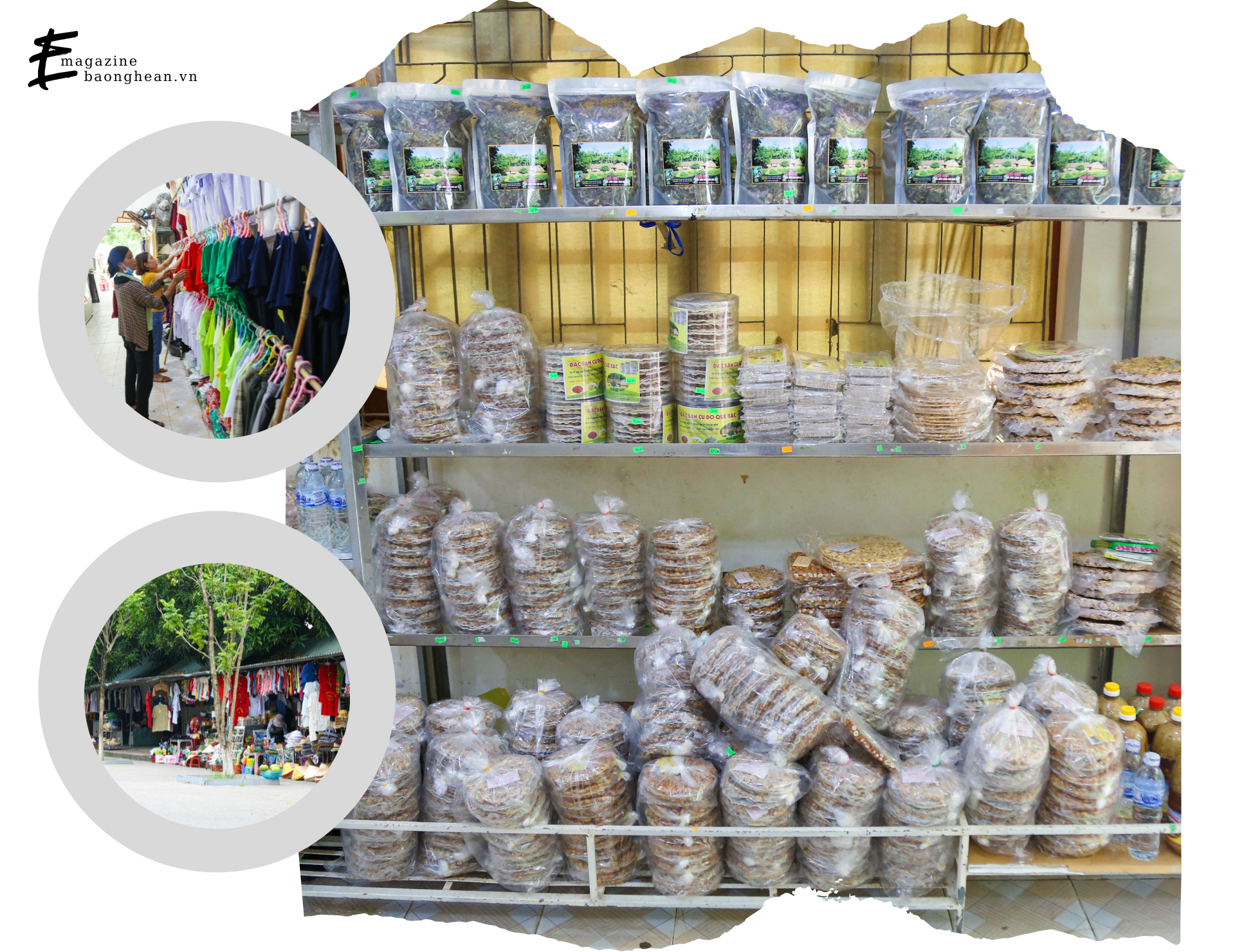
CKC Rest Stop (Dien An Commune, Dien Chau District) is a large-scale rest stop on National Highway 1A, serving passengers on the journey to the North and South, including many tourists. The rest stop sells specialties of the three regions, meeting the diverse needs of tourists. Among the items for sale, Nghe An's OCOP products only have Nam Dan veal sausage. The most popular items are cu do candy (Ha Tinh) and Ba Lang fish sauce (Thanh Hoa)... Similarly, at a Nghe Tinh specialty store in Vinh Tan New Urban Area (Vinh City), there is not a single Nghe An OCOP product present here.
In the coastal tourist town of Cua Lo, in the central area of beach bathing and relaxation, souvenir stalls, the items for sale are mainly consumer goods and clothing which are quite popular in the market. There are almost no stalls selling OCOP products of Cua Lo town and localities in the province. This situation also occurs in the markets in Cua Lo, local OCOP products are almost absent. According to traders, items such as fish sauce, mackerel and shrimp paste, although recognized as OCOP products, are very difficult to consume. Because when needed, local people will go to the processing facility to buy; tourists are not very interested.
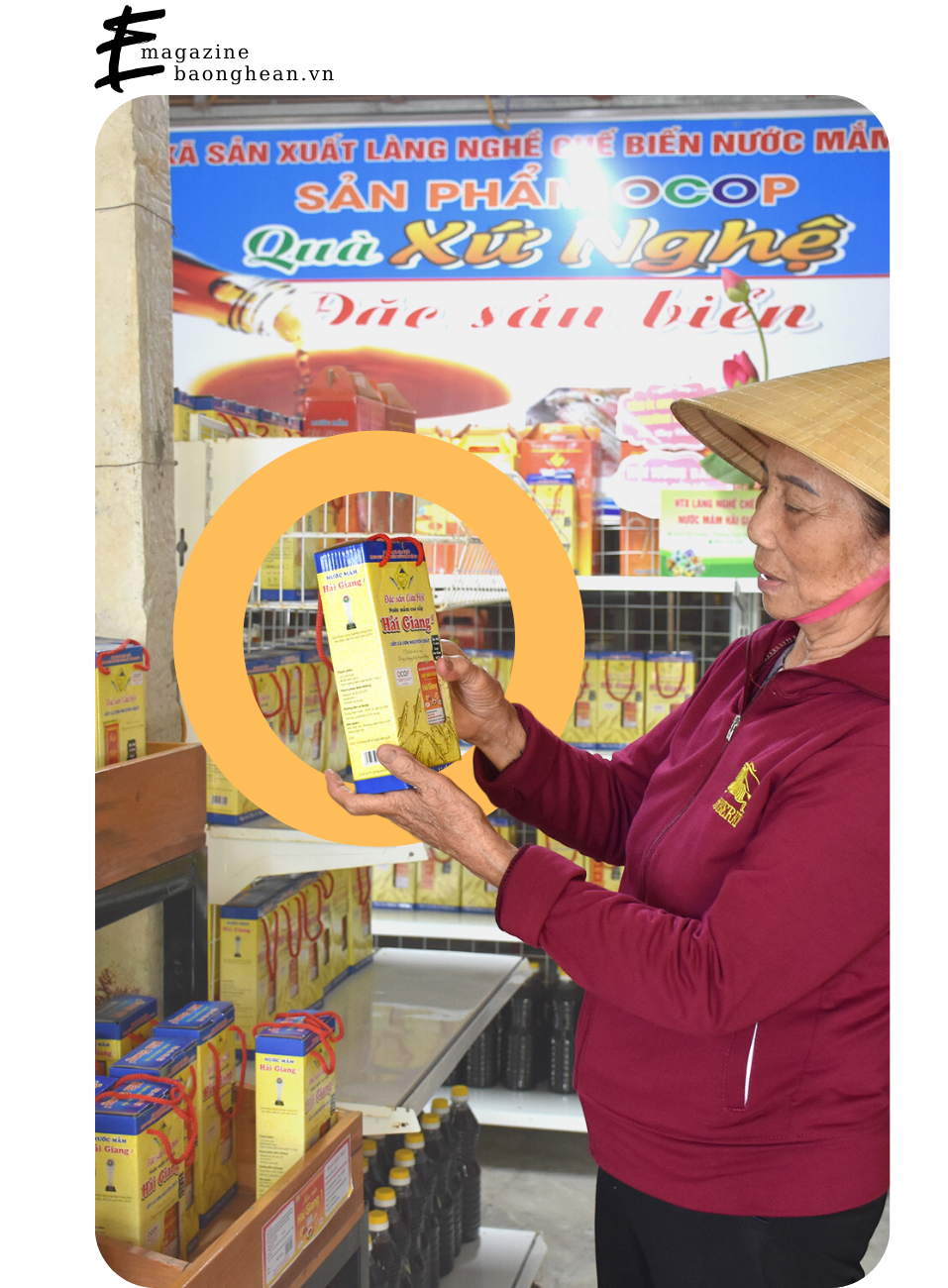
Coming to the traditional fish sauce craft village of Hai Giang 1 (Nghi Hai ward, Cua Lo town), we learned that: Since being recognized as an OCOP product, Hai Giang 1 fish sauce has helped people increase their income. Every year, the craft village supplies the market with about 1 million liters of fish sauce, with a total income of about 35 billion VND/year, an average income of 6 million VND/household/month... However, the expansion of the market towards reaching tourists to visit and relax in Cua Lo has not been as expected.
According to the people of Hai Giang 1 fish sauce village, in order to expand the market, in addition to applying traditional production methods and using new technology to help filter out toxic substances, the products of the craft village are bottled in many different sizes, with all necessary information printed on the outside. Ms. Nguyen Thi Bien - the owner of the fish sauce production household shared: "Thanks to this change, the products of the craft village have initially reached a number of tourists and consumed a certain amount of products. However, the amount of products consumed is not really significant compared to the number of tourists coming to the coastal city of Cua Lo every day."
Similarly, in Cua Lo town, Ms. Nguyen Thi Nom - owner of Hung Nom processing facility, which owns the OCOP product Hai Giang 2 grilled mackerel, also said: "Most of the products are sold to traders for distribution in Vinh city and other areas in the province. The rest are transported to consumption facilities in Hanoi and the northern provinces. Tourists often come in groups to the facility to enjoy on the spot and buy a little as a gift, but it is not significant."

Explaining the lack of customers, staff at rest stops and specialty stores in Nghe An said: Customers in general, and tourists in particular, often choose very carefully before deciding to buy a product. The selected products often have famous brands. Meanwhile, OCOP products in the province have not yet affirmed their brands, are not widely known nationwide, so they have not been given priority... There have been rest stops (in Nghi Loc district) and stores specializing in Nghe An specialties that have had to close due to sluggish sales and losses.
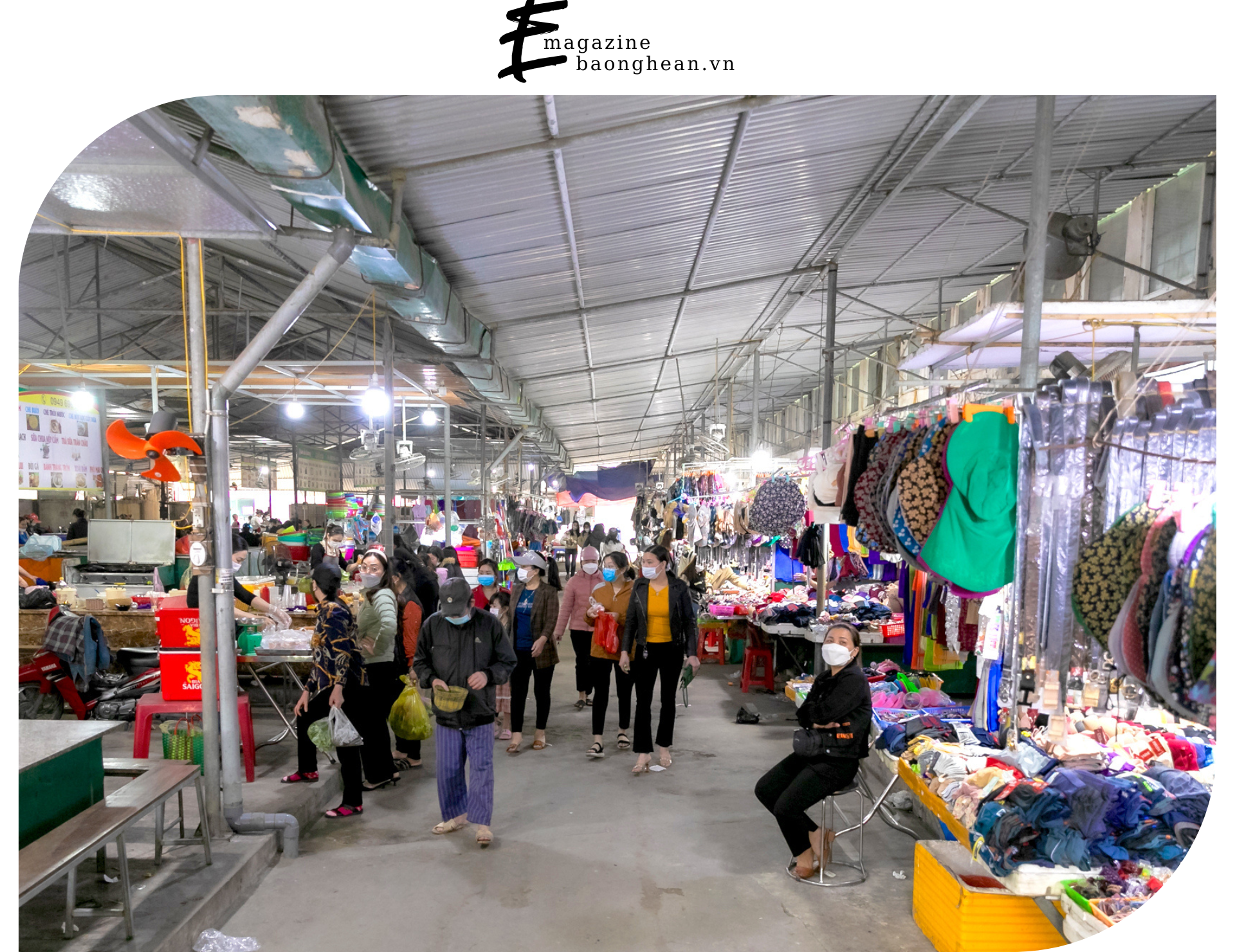
Through the survey, it can be seen that OCOP products have only reached ordinary consumers and have not yet dominated the tourism market. Ms. Le Thu Hien, a tourist from Hanoi, shared: “I have been to Nghe An several times to relax in Cua Lo, to do community tourism in the West, and wanted to buy some products to give to relatives and friends, but it was very difficult to choose. Although there are many products, they lack characteristics and uniqueness, and there is no brand on the market. The designs and sizes are not suitable. For example, the fish sauce products that meet OCOP standards of Nghe An cannot be compared with fish sauce from Phan Thiet, Phu Quoc, Ba Lang…”.
The absence of OCOP products in the tourism market and their lack of popularity among tourists is due to many reasons: First of all, OCOP products themselves are not really attractive, lack competitiveness, have not affirmed their brands, and are not suitable for consumer tastes. Secondly, product promotion still has many limitations, especially product promotion on online channels and e-commerce is not eye-catching, vivid, and attractive. Third, the selection and development of OCOP products have not focused on their characteristics, specificity, and representativeness; the development and implementation of the "One Commune One Product" Program is still following the trend. Consumers in Nghe An themselves have not supported local OCOP products, and have not made their hometown products stand out.
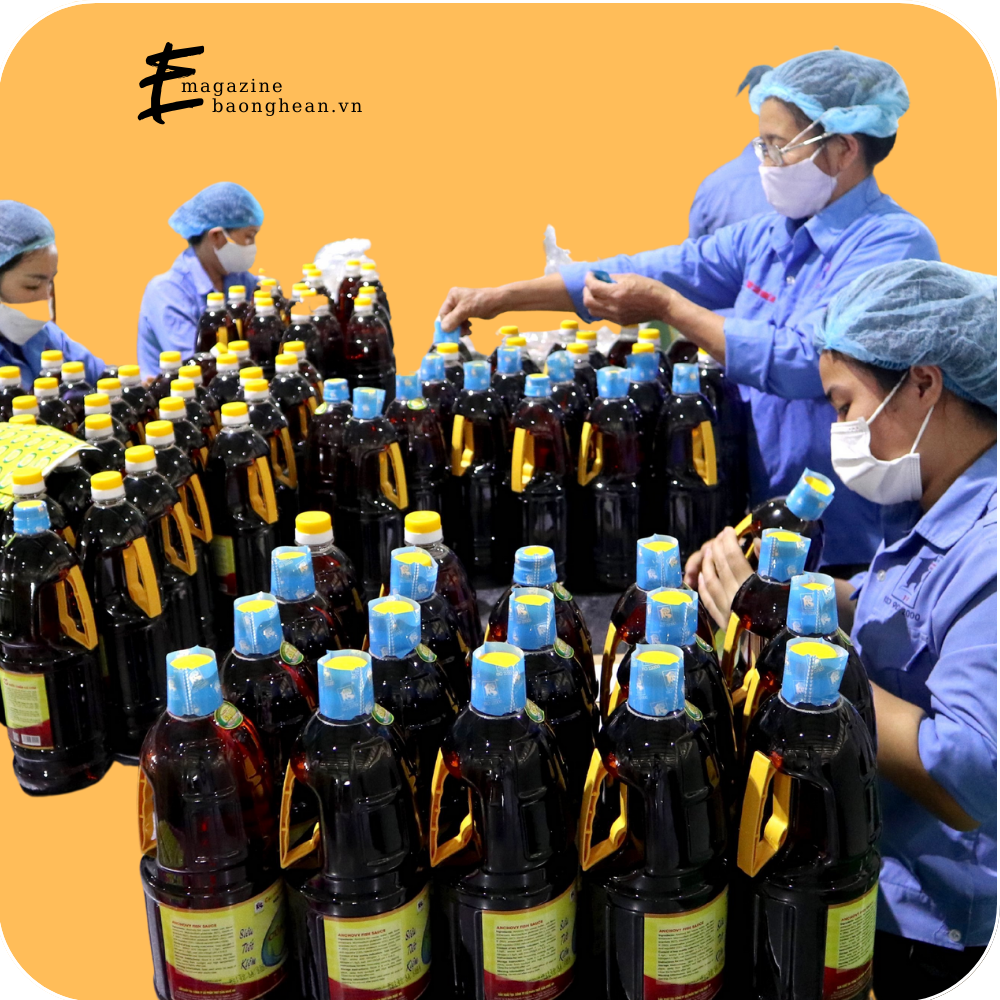
The shortcomings of OCOP products were also clearly stated by Comrade Hoang Nghia Hieu - Deputy Secretary of the Provincial Party Committee, Vice Chairman of the Provincial People's Committee at the Conference to announce OCOP products at the provincial level in 2021 and deploy the "One Commune One Product" (OCOP) Program in 2022: Firstly, OCOP products are mainly produced by hand, with outdated technological equipment, and the application of scientific and technical advances in production is still limited; Secondly, OCOP product owners have not paid attention to designs, labels, packaging, and types of certificates; Thirdly, some localities have not yet identified their advantages and potentials, and have not paid much attention to developing new products; Some localities and owners are not enthusiastic about the program; Fourthly, resources for implementing the program are still limited, mainly integrated, leading to difficulties in the implementation process; trade promotion, introduction, and promotion of OCOP products have not received due attention...
